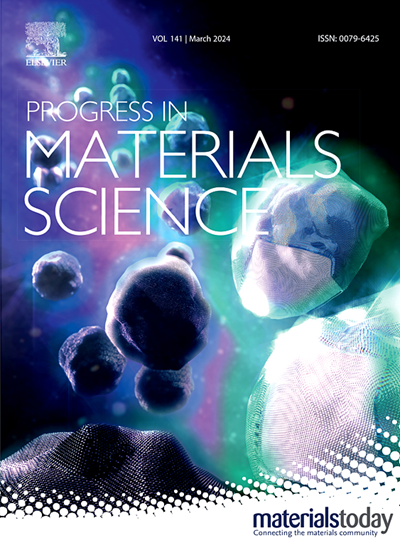Advances in relaxation and memory effects of magnetic nanoparticles for biomedical applications
IF 40
1区 材料科学
Q1 MATERIALS SCIENCE, MULTIDISCIPLINARY
引用次数: 0
Abstract
Functionalized magnetic nanoparticles are pivotal in magnetic resonance imaging, computed tomography, controlled drug delivery, and hyperthermia treatments due to their exceptional magnetic relaxation and functional properties. The magnetic core composition and structure significantly affects the complex magnetic properties of these nanoparticles necessitating a thorough examination of magnetism fundamentals related to these systems. One important aspect is the ability of magnetic nanoparticles to retain previous magnetic state configurations known as memory effect, primarily governed by domain structure and magnetic anisotropy. Despite its relevance to advanced applications, comprehensive studies on magnetic relaxation and memory effects remain limited. The present review aims to bridge this gap by investigating relaxation mechanisms, synthesis strategies, and applications, fostering further innovation. It investigates the memory effects and their dependence on particle composition and morphology along with key synthesis techniques for large-scale production in industrial adoption. Structured into focused sections on magnetic properties and their influence on biomedical and technological applications, this review provides essential insights into memory effects, magneto-relaxation mechanisms, influencing factors, and both experimental and theoretical methodologies. It also delves into computational modelling and AI-driven design, which are revolutionizing the prediction, discovery, and optimization of materials with tailored properties.
磁性纳米颗粒在生物医学应用中的放松和记忆效应研究进展
功能化磁性纳米颗粒由于其特殊的磁弛豫和功能特性,在磁共振成像、计算机断层扫描、控制药物输送和热疗治疗中发挥着关键作用。磁芯的组成和结构显著影响这些纳米颗粒的复杂磁性能,因此需要对这些系统相关的磁性基础进行彻底的研究。一个重要的方面是磁性纳米颗粒保留先前磁性状态配置的能力,称为记忆效应,主要由畴结构和磁各向异性控制。尽管它与先进的应用相关,但对磁弛豫和记忆效应的综合研究仍然有限。本文旨在通过研究弛豫机制、合成策略和应用来弥补这一差距,促进进一步的创新。研究了记忆效应及其对颗粒组成和形态的依赖,以及工业化大规模生产的关键合成技术。本综述以磁性及其对生物医学和技术应用的影响为重点,提供了记忆效应、磁松弛机制、影响因素以及实验和理论方法的基本见解。它还深入研究了计算建模和人工智能驱动的设计,这些设计正在彻底改变具有定制特性的材料的预测、发现和优化。
本文章由计算机程序翻译,如有差异,请以英文原文为准。
求助全文
约1分钟内获得全文
求助全文
来源期刊

Progress in Materials Science
工程技术-材料科学:综合
CiteScore
59.60
自引率
0.80%
发文量
101
审稿时长
11.4 months
期刊介绍:
Progress in Materials Science is a journal that publishes authoritative and critical reviews of recent advances in the science of materials. The focus of the journal is on the fundamental aspects of materials science, particularly those concerning microstructure and nanostructure and their relationship to properties. Emphasis is also placed on the thermodynamics, kinetics, mechanisms, and modeling of processes within materials, as well as the understanding of material properties in engineering and other applications.
The journal welcomes reviews from authors who are active leaders in the field of materials science and have a strong scientific track record. Materials of interest include metallic, ceramic, polymeric, biological, medical, and composite materials in all forms.
Manuscripts submitted to Progress in Materials Science are generally longer than those found in other research journals. While the focus is on invited reviews, interested authors may submit a proposal for consideration. Non-invited manuscripts are required to be preceded by the submission of a proposal. Authors publishing in Progress in Materials Science have the option to publish their research via subscription or open access. Open access publication requires the author or research funder to meet a publication fee (APC).
Abstracting and indexing services for Progress in Materials Science include Current Contents, Science Citation Index Expanded, Materials Science Citation Index, Chemical Abstracts, Engineering Index, INSPEC, and Scopus.
 求助内容:
求助内容: 应助结果提醒方式:
应助结果提醒方式:


